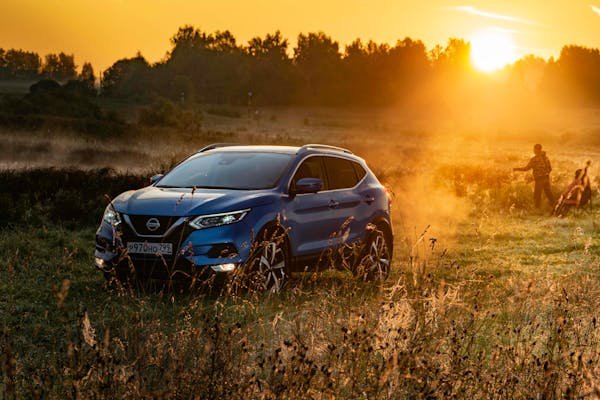When you’re planning to buy a car, it’s easy to get lost in the long list of details presented by manufacturers and dealers. These details are what we call car spec—short for car specifications. Understanding what these specifications mean can help you make a smarter choice when selecting your next ride.
In this article, we’ll break down the different types of car spec and explain how each one impacts your driving experience, performance, comfort, and safety.
What Is a Car Spec?
A car spec is a technical description of a vehicle’s features. These specs include performance data, engine details, fuel economy, size, weight, safety features, infotainment options, and more. Car specs are the language of the auto industry, and knowing how to read them gives you an edge as a buyer.
1. Engine Specs: The Powerhouse
The engine is often the first spec buyers look at, and for good reason.
-
Displacement (cc or L): The volume of the engine cylinders. For example, 1.2L or 1200cc means the engine is relatively compact and efficient.
-
Horsepower (HP): This shows how powerful the engine is. More HP means better acceleration and top speed.
-
Torque (Nm): Torque gives you pulling power and helps in overtaking or climbing steep roads.
-
Fuel Type: Petrol, diesel, hybrid, or electric. Petrol is great for city driving, diesel for long-distance, and electric for eco-conscious drivers.
A car with 100 HP and 150 Nm torque, for example, will perform better than one with 70 HP and 100 Nm.
2. Transmission Specs: How Your Car Shifts Gears
Car spec often includes the transmission type, which controls how the engine sends power to the wheels.
-
Manual Transmission (MT): Great for drivers who like full control.
-
Automatic Transmission (AT): Easy for city traffic; comes in torque converter, CVT, or AMT variants.
-
Dual Clutch Transmission (DCT): Ideal for performance and speed; used in premium models.
3. Mileage and Fuel Efficiency
This is one of the most important specs for most buyers. Fuel efficiency is measured in km/l (kilometers per liter) or mpg (miles per gallon).
-
Petrol cars typically offer 12–18 km/l.
-
Diesel cars provide around 18–25 km/l.
-
Hybrids and EVs are even more efficient.
Make sure to check both ARAI-certified and real-world mileage reports.
4. Size and Weight Specs
A car’s dimensions impact its practicality, parking ease, and cabin space.
-
Length, Width, Height: Helps you understand the overall size of the car.
-
Wheelbase: A longer wheelbase usually means better interior space.
-
Ground Clearance: Especially important for Indian roads. Anything above 170mm is considered good.
-
Curb Weight: The car’s total weight without passengers. Heavier cars are more stable but may consume more fuel.
5. Suspension and Handling
Though often overlooked, these car specs affect how smooth your ride is.
-
Front Suspension: Usually MacPherson strut, good for most vehicles.
-
Rear Suspension: Can be torsion beam, multi-link, or trailing arm.
-
Ride Quality: A car with independent suspension on all four wheels typically offers the most comfort.
6. Brakes and Safety Features
Safety is a non-negotiable factor.
-
ABS (Anti-lock Braking System): Prevents skidding during emergency stops.
-
EBD (Electronic Brakeforce Distribution): Distributes brake force across all wheels for better control.
-
Airbags: Most cars now come with dual airbags as standard. Higher trims may offer 6–8 airbags.
-
Rear Camera and Sensors: Useful for parking and reversing.
Always look up crash test ratings from agencies like Global NCAP or Euro NCAP.
7. Interior Features and Infotainment
Interior car specs define how comfortable and tech-savvy your driving experience is.
-
Touchscreen Displays: Available in sizes from 7-inch to 12-inch, often with Android Auto and Apple CarPlay.
-
Climate Control: Manual or automatic AC; higher-end cars offer dual-zone.
-
Seat Upholstery: Options include fabric, leatherette, or premium leather.
-
Connectivity: Bluetooth, USB ports, wireless charging, and more.
8. Exterior Specs and Styling
The exterior is where aesthetics and function come together.
-
Headlights: Halogen, LED, or projector options.
-
Alloy Wheels vs Steel Rims: Alloys are lighter and better-looking.
-
Sunroof or Panoramic Roof: Adds a premium touch.
-
Body Color and Design: Spoilers, roof rails, and chrome accents enhance style.
9. Advanced Driver Aids
Modern cars offer tech-heavy car specs:
-
Cruise Control: Maintains speed without driver input.
-
Hill Start Assist: Prevents rolling backward on slopes.
-
ESC (Electronic Stability Control): Maintains stability during cornering or slippery conditions.
-
ADAS (Advanced Driver Assistance Systems): Found in premium vehicles, includes lane assist, adaptive cruise control, etc.
Final Thoughts
Knowing your car spec isn’t just for experts—it’s for anyone who wants to make a smart car-buying decision. From performance and safety to comfort and technology, every spec tells a story. So next time you see a brochure or website full of numbers and terms, you’ll know exactly what to look for—and why it matters.
